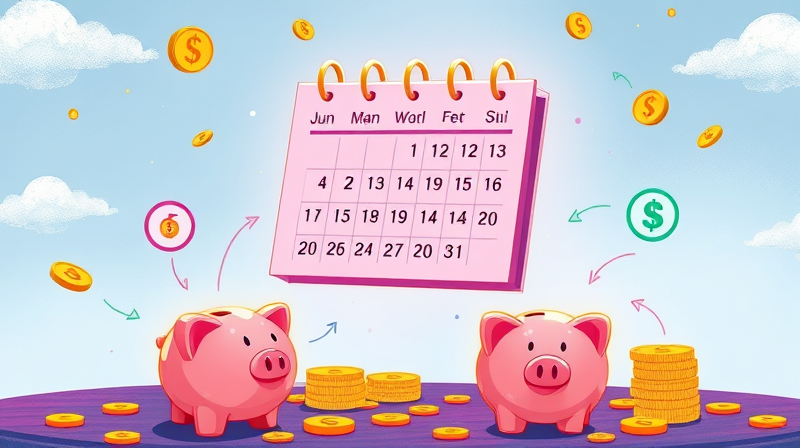
Budgeting is often viewed as a chore, but it can become an empowering practice when you see your spending laid out clearly. Envelope budgeting, a method that dates back decades, brings discipline and clarity to financial management.
In a digital age where most transactions are cashless, this traditional approach has evolved into powerful apps and platforms that allow users to allocate and monitor funds virtually. By combining the tactile sense of envelopes with modern visualization, digital envelope systems can transform the way you manage money.
Envelope budgeting is a system of dividing available funds into specific categories. Traditionally, physical envelopes represent each category—such as groceries, entertainment, and transportation—where cash is stored. The principle is straightforward: when an envelope is empty, no more spending occurs in that category.
This method leverages visual clarity and real-time tracking to create a tangible boundary around spending. Physically seeing an envelope run low can be a powerful deterrent against unnecessary purchases, fostering a more mindful approach to every expense.
Carrying and tracking physical cash is less practical for many households today. Digital envelope-budgeting tools mirror the analog process using software interfaces and mobile apps. Users assign virtual funds to customizable categories, log transactions, and watch color-coded bars or charts indicate remaining balances.
These platforms often send notifications when a category nears depletion, helping to prevent impulse spending effectively. Moreover, they eliminate the risks associated with cash handling while offering greater convenience and portability.
Setting up a digital envelope system involves a few essential steps:
Many apps support optimized envelope allocation based on history, suggesting amounts based on past spending patterns. Manual logging emphasizes simple manual data entry discipline, ensuring each purchase is consciously recognized and categorized.
Choosing the right tool depends on your needs, such as automation level, reporting features, and budget. Below is a comparison of three common solutions:
Each solution balances automation, cost, and learning curve. Goodbudget is ideal for those who prefer simplicity, while YNAB appeals to users seeking robust reporting and automation. Spreadsheets offer full customization but require template creation and maintenance.
Envelope budgeting tools deliver distinct advantages:
However, they also present challenges. Manual entry can be tedious, and auto-sync features may incur fees. Rigid categories sometimes fail to accommodate spontaneous expenses or emergencies, requiring transfers between envelopes or reserve funds.
To make the most of envelope budgeting, consider these practical strategies:
Avoid the temptation to borrow from one envelope to cover another. If frequent overages occur, it’s a signal to reallocate rather than overspend. Encourage household members to participate and understand the purpose behind each envelope.
The envelope budgeting concept traces back to mid-20th century households that managed all expenses in cash. Financial educators praised its ability to enforce discipline and curb unnecessary spending. In recent decades, advisors like Dave Ramsey popularized the method through books and seminars, inspiring millions to adopt cash-based systems.
With the advent of smartphones, a new generation of developers has embraced this age-old technique and given it a digital makeover. Modern apps capture the tactile satisfaction of handling envelopes while providing analytics, reminders, and cloud backup. This blend of tradition and modern convenience ensures that envelope budgeting remains relevant, accessible, and effective for diverse user groups.
Envelope budgeting resonates particularly with people who appreciate a structured, hands-on approach to money management. Those who struggle with tracking small, frequent expenses often find the clarity of separate categories transformative. Parents looking to teach children about financial responsibility can involve kids in allocating allowances into envelopes for school lunches, toys, or savings.
Freelancers and gig workers with irregular income streams benefit from clear allocation for variable costs, ensuring essentials are covered during lean periods. Tech-savvy millennials, wary of traditional banking, embrace envelope systems that integrate gamified visuals with real-time feedback. By aligning categories with personal values—such as wellness, education, or charitable giving—users gain both financial control and motivational reminders of their priorities.
Envelope budgeting shines when integrated with long-term financial goals. Pairing it with a 50/30/20 split approach—needs, wants, savings—can simplify allocation and help you save systematically. Transfer any surplus to investment or emergency funds at month’s end.
Regularly reviewing your strategy ensures that allocations reflect evolving priorities, such as saving for a home down payment, paying off debt, or building an educational fund. Over time, disciplined envelope budgeting cultivates long-term financial well-being goals through consistent practice and incremental improvements.
Whether you choose a dedicated app or a custom spreadsheet, the essence of envelope budgeting remains the same: setting clear limits, tracking with intention, and celebrating small victories as you stay within your envelopes.
References













